#anime flower symbolism
Explore tagged Tumblr posts
Text
Sousou no Frieren Hanakotoba Analysis

┏ · ──────── ·𖥸· ──────── · ┓
-> 1) Blue-Moon Weed [蒼月草│Sō gessō]

The Blue-Moon Weed (Sō gesso │ 蒼月草) is a blue, fictitious flower in the universe of Sousou no Frieren endemic to Himmel's hometown. The flower can be described as having blue anthers, yellow filaments as well as five petals that range from deeper blue at the tips to lighter blue in the centre. Although the Blue-Moon Weed is fictional, it appears to be inspired by real-life plants—namely Baby Blue Eyes and the Asiatic Daylily.
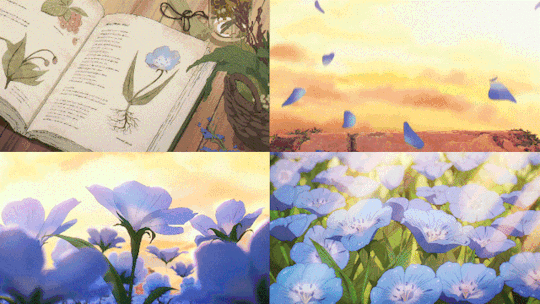
During episode 2, Frieren cleans a statue of Himmel the hero, afterwards a local herbalist proposes planting some flowers around the statue to brighten the area. This causes Frieren to recall how Himmel once told her his favourite flowers were Blue-Moon Weeds. This motivates her to search for these flowers over the next six months, despite these plants not being sighted for decades. After much frustration on Fern's part, the two eventually discover a small meadow of Blue-Moon Weed flowers atop an abandoned watchtower. This allows Frieren to use her spell to decorate the area around the statue with these flowers. During this incident, we learn that Frieren’s penchant for collecting odd spells partly stems from Himmel expressing his appreciation for them—particularly the flower bed-making spell which is currently her favourite. Although Frieren couldn’t grant Himmel’s desire to show her Blue-Moon Weed flowers before his death, she was still somewhat able to fulfil this desire by finding the flowers and planting them around his statue as a tribute. Her willingness to devote half a year towards finding the flower showcases her remarkable dedication and nuanced sentimentality.
-> 1,2) Baby Blue Eyes (Nemophila sp.)

The most apparent inspiration for the Blue-Moon Weed is likely Baby Blue Eyes (Nemophila sp.). Although the leaves of the Blue-Moon Weed have an elongated shape, the shape and method of attachment differ from those of Nemophila—the shape and colour of the flowers are very similar to Nemophila. Baby Blue Eyes flowers are known as Rurikarakusa (ルリカラクサ) in Japan. In hanakotoba, Nemophila symbolises success everywhere, daintiness and forgiveness. In Western floriography, they represent victory, tenderness, sensitivity, harmony and trust. These symbolic connotations are closely linked with Himmel’s personality and accomplishments. Nemophila also represent the transient nature of beauty and life, encouraging us to treasure every moment and appreciate simplicity—which is a core theme in the series and is a lesson that Frieren is slowly learning throughout her journey.
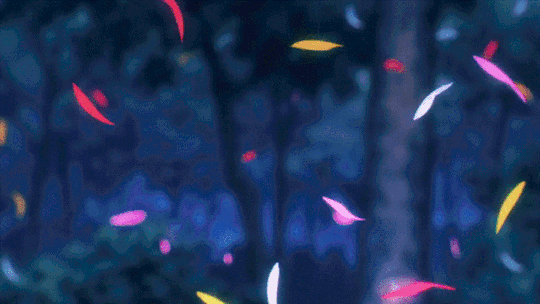
The scientific name for Baby Blue Eyes, Nemophila, is derived from Greek and roughly translates to "loves small woodlands". This is derived from Nemophila's tendency to grow around the margins of woodlands. In a way, this is reminiscent of Himmel and Frieren's first encounter in the forest when the former became lost. After pointing him in the right direction, Frieren casts the flower bed-making spell leaving a lasting impact on Himmel. Specifically, it is hinted that Himmel sought Frieren out to be the party's magician since that event was the first time he perceived magic as being beautiful.
-> 1,2) Asiatic Dayflower (Commelina communis)

Another possible inspiration for the Blue-Moon Weed is the Asiatic Dayflower (Commelina communis). In Japan, this plant is known as tsuyukusa (露草) meaning "dew grass“. However, in ancient times it was called tsukikusa (月草) meaning “moon grass” which is similar to the name of Blue-Moon Weed. Although the two plants both possess blue-coloured flowers and similar leaf shapes; how the leaves attach to the stem differs, as does the shape of the flowers. In hanakotoba, the Asiatic Dayflower symbolises nostalgic relationships, secret love, transience and changes of heart in love. In Western floriography, they symbolise harmony, growth, prosperity and abundance. These symbolic associations—particularly those of nostalgic relationships, growth and changes of the heart in love—resonate heavily with Frieren’s relationship with Himmel. While the flower’s symbolism of secret love and transience resonates with Himmel’s feelings towards Frieren.
-> 2) Mirrored Lotus [鏡蓮華│Kagami renge]
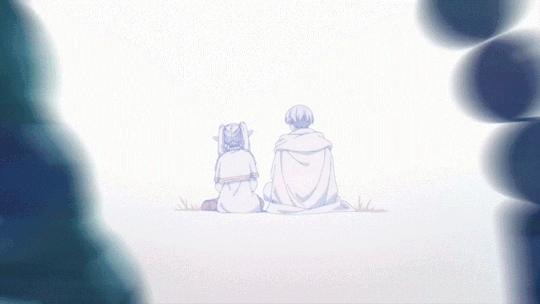
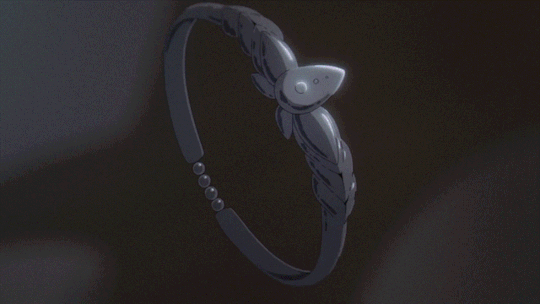
The Mirror Lotus (Kagami renge │鏡蓮華) is a fictitious flower in the universe of Sousou no Frieren. However, its name suggests it is based on a real lotus (Nelumbo nucifera). Furthermore, the shape of the flower on Fern's bracelet is quite similar to that of a real lotus, which lends credence to this notion. In episode 14, it is noted that the silver bracelet Stark bought Fern for her birthday features a Mirror Lotus design. As Frieren studies the bracelet, she realises it has the same design as a ring she received from Himmel in the past. Sein then reveals that the Mirror Lotus symbolises eternal love.
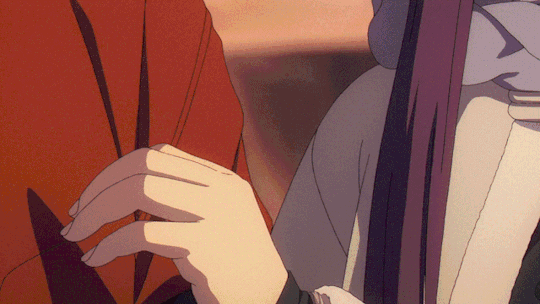
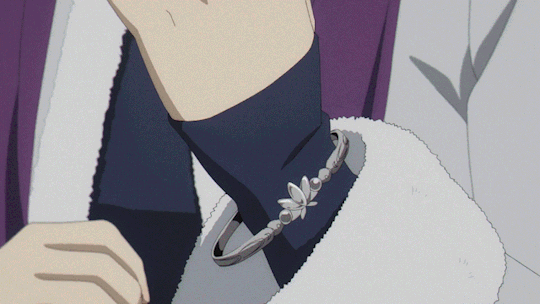
Although Fern, Stark, and Frieren were unaware of the flower's symbolism, Himmel's interest in flowers suggests he recognised the meaning behind the ring he bought for Frieren—despite her assumption otherwise. As Frieren recalls receiving the ring, we see that after she selected it randomly Himmel was struck into silence and stared at it with a pensive expression. He then knelt before Frieren and placed it on the fourth finger of her left hand. This event, resembling a marriage proposal, reinforces the impression that he understood the significance of the flower. Furthermore, Himmel never��married anyone else, alluding to the fact that Himmel must have pledged his eternal affection to Frieren through this ring. The significance of Himmel gifting Frieren a ring that symbolises "eternal love," as well as the multiple sculptures he had constructed around the world serve as a reminder of his existence. They serve as proof that his love for her transcends time and continues to accompany her on her journey.
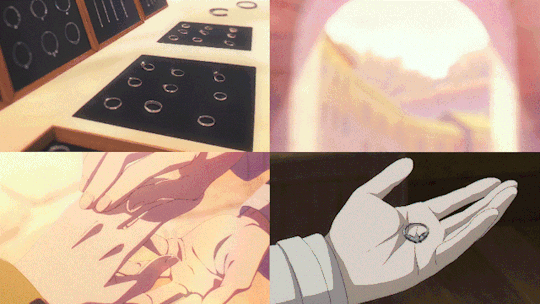
Although Fern’s bracelet Fern and Frieren’s ring both have a mirrored lotus motif, the designs of the flowers differ in shape. The mirror lotus flower on Frieren’s ring is in bud state while the flower Fern's bracelet is in full bloom. This distinction references the difference between the two pairs’ relationships. While it is inferred that Himmel knew about the flower’s meaning, Frieren wasn't aware and only discovered it after his death. Himmel's romantic feelings for Frieren are still unknown to her, corresponding to the flower's bud shape on the ring, as their relationship remains frozen, unable to fully blossom due to the distance between them caused by their differing lifespans and Frieren's unintentional obliviousness. However, Fern and Stark discover the flower's significance together almost immediately after buying the bracelet. Although Fern, like Stark, was unaware of the mirror lotus' symbolism when she accepted the bracelet, she continued to wear it after learning about it and was enraged by Stark's proposal that she replace it with another design. If Fern hadn't had any romantic feelings for Stark, she would have been reluctant to wear the bracelet after this revelation. This, in conjunction with the flower's full bloom design on her bracelet, suggests that the pair will become mutually conscious of each other's romantic feelings and eventually end up together.
-> 2,1) Sacred lotus (Nelumbo nucifera)

In Japan, lotuses are called ren (蓮) or hasu (はす) and symbolise eloquence, sacredness, detached love as well as a pure heart in hanakotoba. Its symbolism of a pure heart is derived from how the lotus blooms into a noble and pure flower despite rising from muddy water. This symbolic connotation resonates with Himmel’s character, particularly his remarkable accomplishments despite his humble background. Lotuses are also globally associated with purity, rebirth, transformation and enlightenment. The lotus’s symbolic representation of enlightenment and transformation resonates with Frieren’s journey to learn and understand humans better to alleviate her regret of not getting to know Himmel better. In Asia, two lotus flowers blossoming from a single stem represent a desire for harmony and a shared heart. While in Western floriography, lotuses represent grace and estranged love. This sharp contrast between the lotus’ romantic symbolism in Asia and the West correlates with the difference in dynamic between the series’ main two pairings and their narrative conclusions. Additionally, despite Himmel’s feelings remaining unknown to Frieren, due to her leaving after their 10-year journey (i.e. estranged love), she shows a desire to understand him (i.e. a desire for a shared heart) after his death.
┗ · ──────── ·𖥸· ──────── · ┛
╰➤ Other anime & donghua hanakotoba posts
[A/N: It'll probably be a while until I make another one of these posts—but if anyone has any requests feel free to send them. Also, lmk what other kinds of posts I should do in the meantime? Lastly, if you liked this post, check out my other hanakotoba analysis posts✿]
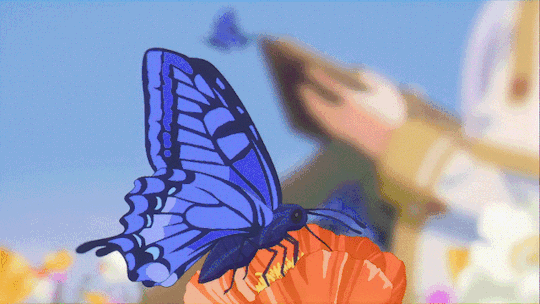
#sousou no frieren#frieren: beyond journey's end#frieren#frieren at the funeral#frieren anime#sousou no frieren hanakotaba#sousou no frieren hanakotoba analysis#frieren hanakotoba#frieren flowers#blue moon weed#blue-moon weed#mirror lotus#himmel#frieren himmel#frimmel#frieren x himmel#himmel x frieren#himmel frieren#stark x fern#fern x stark#fern frieren#stark frieren#hanakotoba#flower symbolism#anime flower symbolism#anime hanakotoba#anime opening symbolism#anime symbolism#floriography#anime
109 notes
·
View notes
Text
hostage

#the passenger 2023#kyle gallner#benson the passenger#the plant is yew tree which symbolizes death and serves as an omen of doom in flower language#also yeah look who has finally watched the passenger and now can't get this guy out of my system!#his big wet eyes and cornered animal demeanor have captivated me#horror#artists on tumblr#horror art#film art#cw blood
163 notes
·
View notes
Text

"I only hope it felt like falling asleep."
for @barrenclan because asphodelpaw has me fucked. up. may she have sweet dreams of better places
#barrenclan#asphodelpaw#also had to do my favorite: flower symbolism#fitting that some asphodels have that red accent to them.....#my fanart#my art#fun fact: this was originally a cool sketchbook drawing fanart and its actually verrry slightly overlayed over this drawing#barrenclan spoilers#spoilers#tried to give this one a bit of a storybook vibe#also inspired by some funerary animal photos i saw like many many years ago here on tumblr where they were surrounded by a wreath of flower#blood cw
435 notes
·
View notes
Text

sometimes i remember the "you are far too right" note and cry
also,
"Even at nineteen,
I had come to realize
that violets fade,
spring waters soon run dry,
this life too is transient"
– River of Stars, Yosano Akiko
#the flowers are columbines which (according to wikipedia dont trust me on this) symbolize righteousness and humility#bsd fanart#fanart#bongou stray dogs#bsd anime#bongou stray dogs fanart#bungo stray dogs#doodle#bsd yosano#yosano akiko#yosano fanart#she feels very tragic to me idk
695 notes
·
View notes
Text
Project: Eden's Garden chapter 1 spoilers below !!



❝ 𝓓𝓪𝓻𝓴 𝓬𝓮𝓷𝓽𝓮𝓻 𝓹𝓸𝓹𝓹𝓲𝓮𝓼 𝓼𝔂𝓶𝓫𝓸𝓵𝓲𝔃𝓮 𝓹𝓮𝓪𝓬𝓮 𝓲𝓷 𝓭𝓮𝓪𝓽𝓱 𝓪𝓷𝓭 𝓮𝓽𝓮𝓻𝓷𝓪𝓵 𝓵𝓲𝓯𝓮 ❞
my muse, my wife, my babygirl
I miss him so much guys WAAAHHH
UPD added a close-up because I didn't draw allat for nothing
#artists on tumblr#artwork#digital art#art tag#my art#illustration#flower language#flower art#poppies#p:eg#p:eg spoilers#p:eg chapter 1#project eden's garden#project eden's garden fanart#fanart#fanganronpa#fangan#animal symbolism#flower symbolism#religious symbolism#wolfgang akire#he is so babygirl#danganronpa fangame#danganronpa
110 notes
·
View notes
Text
Y'know what, fuck you: (proceeds to assign animals (fursonas) to Hannibal your characters)
Will: A burmese mountain dog or an australian shepherd- protective breeds of dogs, and good family pets despite misconsceptions, they are dogs that require enrichment and stimulation constantly, their intelligence a flaw as much as it is a gift
Hannibal: A stag- symbolising a cycle, death and rebirth, transforming Will and others into a higher form, to become what they are made to be
Abigail: A fawn- pure and delicate, representing a fresh start like the one Abigail wished to have, yet a fawn can only survive and thrive with the help of its mother, a mother that Abigail had stolen away
Jack: A lion- the epitome of pride and leadership, the lion is often seen as courageous and brave, but it isnt far for that courage to venture into foolishness, pride being the downfall of this creature
Frederick: A mink- a cunning and stealthy animal and a symbol of self-reliance, betraying others in the name of self-preservation, showing the ability to adapt to any given situation
Margot: A skunk- a symbol of non-violence, a skunk is an animal that is threatened easily and pushes back when cornered, but uses the same means to attract, trapping its mate using its sexuality and sensuality
(I have more but that's for pt.2)
#ive been obsessed with this kind of symbolism#animals fruit and flowers especially#lmk if you disagree#hanniblr#hanniblogging#hannibal#hannibal nbc#hannibal lecter#will graham#abigail hobbs#jack crawford#frederick chiltern#margot verger#headcannons
30 notes
·
View notes
Text
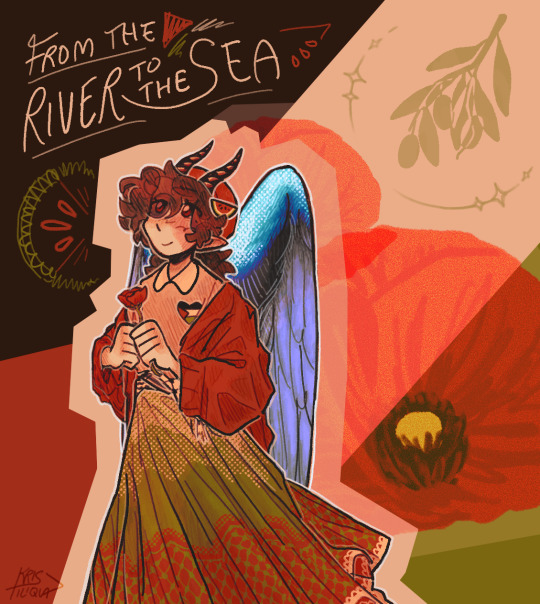
PALESTINE WILL BE FREE 🍉🌟
#she has mountain gazelle horns (national animal of palestine)#palestine sunbird wings (national bird of palestine)#she’s wearing a keffiyeh around her waist#her skirt has the fishnet patterning#and she’s wearing a watermelon hair accessory#plus an amapola (poppy - national flower of palestine)#and olive leaves/branch#all things that represent/symbolize palestine 🇵🇸#FREE PALESTINE#CEASEFIRE NOW#and FUCK ISRAEL#qsmp#tallulah qsmp#qsmp tallulah#qsmp art#qsmp fanart#tallulah qsmp fanart#qsmp tallulah fanart#tallulah fanart#tallulah art#amapola#kristiliquart
177 notes
·
View notes
Text
exhaustion






♪ㅤㅤ ❤︎︎ຶ⵿ ࣪ㅤ݁ ⠳⣄⣀⣠⠞✿͙⢷
#kaomoji#cute symbols#symbols#cutecore#angelcore#flowers#hurt/comfort#archive#moodboard#anime#kawaii#mlp#pompompurin#sanrio#fart
47 notes
·
View notes
Text



you you you , my only one 𔘓



#moodboard#pink aura#angelical#flowers#kpop moodboard#aesthetic#anime moodboard#gg moodboard#just girly things#girls#nicknames#instagram bios#usernames#symbols#kpop layouts#cute layouts#delicate#coquette#girlhood#visual archive#archive moodboard
41 notes
·
View notes
Photo

Ellen Jewett, petal deer, 2013 Sculpture
#hannibal#nbc hannibal#art that reminds me of hannibal#ellen jewett#sculpture#contemporary art#antlers and ravenstag and animal symbolism#flowers#queue
625 notes
·
View notes
Text
Kusuriya no Hitorigoto Part 1A: OP1 Hana Ni Natte
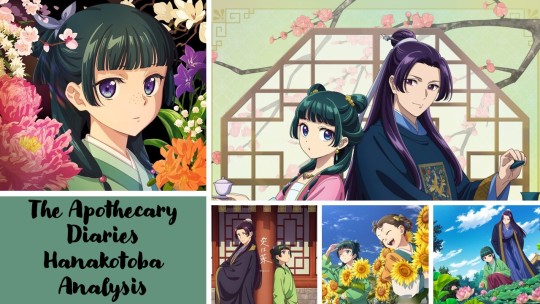
Part 1A │Part 1B │Part 2
┏ · ──────── ·𖥸· ──────── · ┓
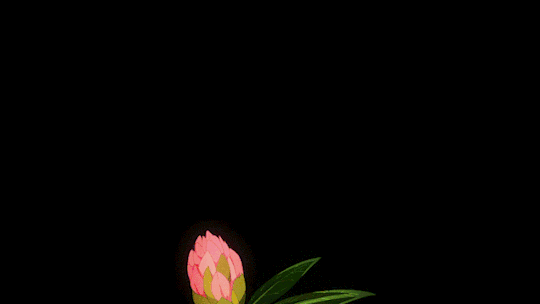
The first eight flowers in the anime's first opening "Hana Ni Natte" correspond to brief, individual story arcs in the first cour of season 1...
-> 1.1) Rhododendron
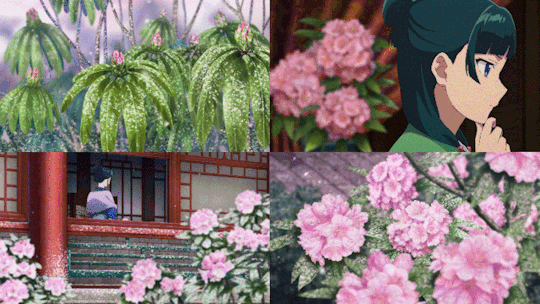

The 1st flower depicted in the opening is the Rhododendron (Rhododendron sp.)—which is also featured during episodes 1 and 2. In Japan, this flower is called shakunage (石楠花). It symbolises majesty, danger and caution in hanakotoba. The Rhododendron’s symbolism of “majesty” is believed to be derived from its beautiful, bountiful flowers while its symbolism of danger and caution stems from the poison in its leaves. Rhododendron plants contain toxic compounds known as grayanotoxins, which, if consumed, can be dangerous to humans and cats. The symbolism of the Rhododendron in other countries is similar to that in Japan. In Western floriography, it represents danger, caution, and suspicion. In contrast to this, the flower also represents beauty, fragility, and grace due to its intricate shape. Pink rhododendrons in particular represent self-love and compassion.
-> 1.2) Cotton Rose
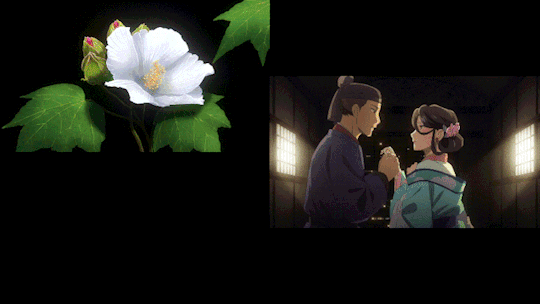
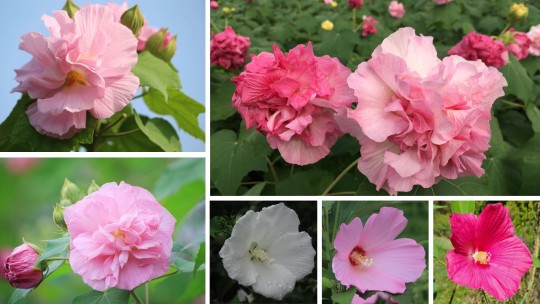
The 2nd flower featured in the first opening is the Cotton Rose (Hibiscus mutabilis)—also called the cotton rosemallow or confederate rose. Cotton roses were featured in the third episode of the anime and are canonically associated with Princess Fuyō who shares her name with the flower. Notably, in the opening the double-flowered variant of the Cotton rose was used rather than the standard version used in the anime. In Japan, cotton roses are called fuyō (芙蓉). In hanakotoba, it symbolises delicate beauty and gentle love—likely derived from its flowers which evoke a delicate, soft feeling. This flower exhibits a phenomenon known as floral colour change, in which the blossoms are white in the morning, pink around midday, and red by nightfall. Cotton roses can be toxic to humans, potentially causing skin irritation and burns if incorrectly handled. Cotton roses are most commonly symbolic of eternal love, devotion, and affection in Western floriography. It also represents sacrifice and resilience—and is historically tied with the American Civil War. The flower's capability to change colour from white to red has made it a symbol of the transformation and adaptability that individuals and communities endure during times of conflict and transition.
-> 1.4) Violet
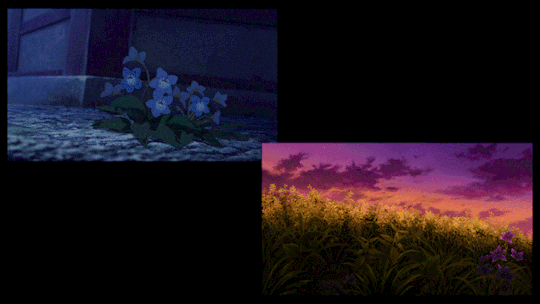

The violet (Viola mandshurica) is the 4th flower depicted in the first opening; they also appear briefly in Episode 5. While generally not harmful to humans, some violets contain substances that can harm cats if ingested. In Japan, they are called sumire (菫). In hanakotoba, violets symbolise honesty, humility, sincerity, and small happiness. Purple violets in particular represent chastity and love. Their representation of humility and honesty is probably derived from their profound blossoms, which thrive discreetly by the roadside or in the grass. In Western floriography, violets symbolise modesty, faithfulness, intuition, spiritual wisdom, harmony and balance. Purple violets symbolise daydreaming and “you occupy my thoughts”—while blue violets symbolise honesty, love, trust, commitment and devotion.
-> 1.5) Montauk daisy

The Montauk daisy (Nipponanthemum nipponicum) is the 5th flower depicted in the first opening, and additionally, they also appear briefly in episode 6. Some daisy varieties can be mildly toxic to humans—causing irritation if consumed—but poisonous to cats. In Japan, they are called Nippon giku (日本菊) and represent faith, peace, hope, chastity, beauty and facing hardship in hanakotoba. White daisies in particular symbolise innocence. Its symbolism of beauty is derived from its Latin name while its symbolism of hope is derived from the property of its flowers to open when light shines on them. In Western floriography, daisies symbolise chastity, beauty, rebirth, new beginnings and hope. This is because they are usually the first flowers to bloom in the spring. White daisies represent purity and innocence; whilst pink daisies represent gentle admiration, affection or adoration. Daisies also represent loyalty, love, simplicity, humility and the ability to keep a secret.
-> 1.6) Toad Lily
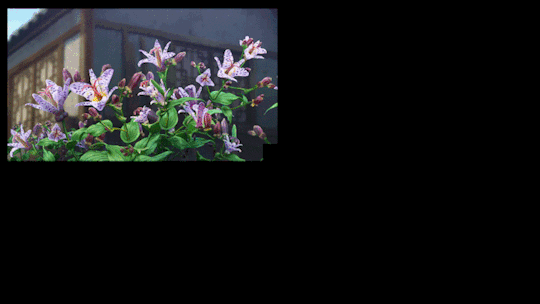
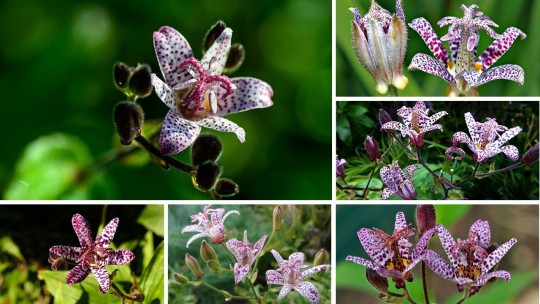
The 6th flower depicted in the first opening is the Toad lily (TricyrtIis hirta), which also appears in episode 8 of the anime. Although toad lilies are not regarded as being highly toxic, they are poisonous to cats. In Japan, toad lilies are called Hototogisu (ホトトギス)—which coincides with the Japanese name with the lesser cuckoo bird. This is because the markings on its petals are similar to those on the bird's chest. consequently, the "Little Cuckoo" lullaby sung by the courtesan in episode 8 and Fengxian in episode 23 shares the same name as the flower. In hanakotoba, toad lilies symbolise loyalty, friendship, hidden thoughts and “forever yours”. In Western floriography, toad lilies symbolise elegance, beauty, and fertility. In Buddhism, they symbolise wisdom, strength and compassion.
-> 1.7) Nandina
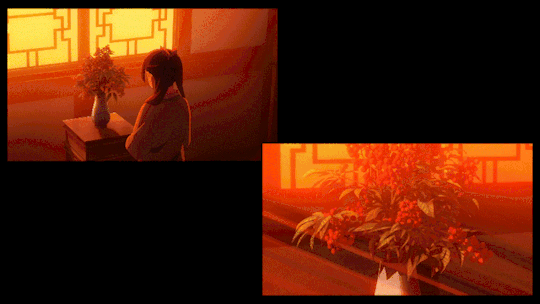

The 7th flower depicted in the first opening is Nandina (Nandina domestica)—often called heavenly bamboo or sacred bamboo. This plant is also featured in episode 9 of the anime but is depicted as a fruit rather than a flower. In Japan, the Nandina is called Nanten (南天) and symbolises “good family” and “my love only grows” in hanakotoba. Nandina blooms with small, white flowers in early summer)—before developing little fruits that gradually redden as winter approaches giving rise to its symbolic representation of "My love only deepens." Additionally, Nandina's symbolism of a "good family" stems from its abundance of fruits, which are interpreted as a symbol of prosperity for offspring. On New Year's Day, the nandina is also considered an auspicious tree to ward off catastrophes. In Western floriography, the nandina represents good luck, fortune, and prosperity. This is due to the Nandina being considered a lucky charm in Japan, which has recently led to it becoming a popular housewarming gift. Despite its positive meaning, Nandina is highly harmful to birds and mammals. However, it is widely regarded as non-toxic to humans.
-> 1.8) Azalea
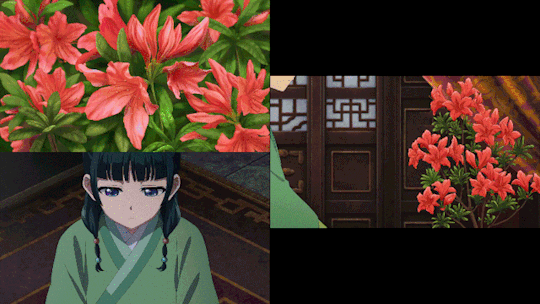

The 8th flower depicted in the first opening is an orange azalea (Rhododendron japonicum). Additionally, red-pink azaleas appear during episode 11. Aside from its beauty, the azalea is known for being extremely toxic—it contains andromedotoxins in its leaves and nectar, including honey made from the nectar. Given that its nectar is equally hazardous, Japanese beekeepers avoid gathering honey during its flowering season in areas where it grows naturally. In Japan, these flowers are called renge tsutsuji (蓮華躑躅) and represent patience and modesty in hanakotoba. Orange azaleas symbolise passion and constancy—while red azaleas represent temperance and "burning thoughts". In Western floriography, azaleas represent temperance, prudence, caution, love, passion, and romance. Since azaleas symbolise temperance, which refers to self-restraint—particularly when confronted with temptation—they are considered a representation of moderation or the balance of different elements in one's life. Orange azaleas specifically symbolise vitality, excitement, encouragement, adventure and discovery. While red azaleas represent love, beauty, passion, and desire, as well as a woman's tenacity and defiance. Additionally, azaleas can represent fragile love as their blossoms easily come off from their stem upon the slightest touch. Consequently, the flower is used to signify a fragile love that can still persevere into a lasting one. Due to the Azalea's toxicity, in certain cultures, giving someone a bouquet of azaleas in a black vase is taken as a death threat.
┗ · ──────── ·𖥸· ──────── · ┛
Part 1A│ Part 1B │Part 2
╰➤ Other anime & donghua hanakotoba posts

[A/N: Please check out part 1B and part 2 as well! Since I've only watched the anime but haven't read the manga or light novels and thus cannot comment on how everything ties into the overarching storyline or character development—I didn't go into too much detail here... Also, since there are so many flowers featured, this post would grow way too long if I did lmao.
If anyone has any ideas on what anime/anime theme song I should cover next in this series please lmk✿ Also, if you liked this post, check out my other hanakotoba analysis posts...]
#kusuriya no hitorigoto#apothecary diaries#the apothecary diaries#jinshi x maomao#maomao#jinshi apothecary diaries#maomao apothecary diaries#hana ni natte#hanakotoba#hanakotoba analysis#flower symbolism#anime flower symbolism#anime hanakotoba#anime opening symbolism#anime symbolism#anime#manga#anime analysis#floriography#jinmao#apothecary diaries anime#apothecary's soliloquy#薬屋のひとりごと#maomao x jinshi
43 notes
·
View notes
Photo

Martin Wittfooth, "Bloom", oil on canvas, 2015. b. 1981 Toronto, Ontario.
“Wittfooth’s paintings, drawings, installations and sculptural works use allegory and symbolism to explore themes of the intersection and clash of industry and nature, and the human influence on the environment.”
#martin wittfooth#bloom#2015#oil on canvas#oil painting#painting#art#american artist#flowers#bird#peacock#animals#allegory#symbolism#industry and nature#nature#human influence#humans#environment#sewer#waste
26 notes
·
View notes
Text
THE EMPHASIS ON THE Bellflowers IN JINSHI'S ROOM WITH MAOMAO.
symbolizes “Unchanging Love”Its a flower la give my own special someone. That she'd pledge her eternal love to you.

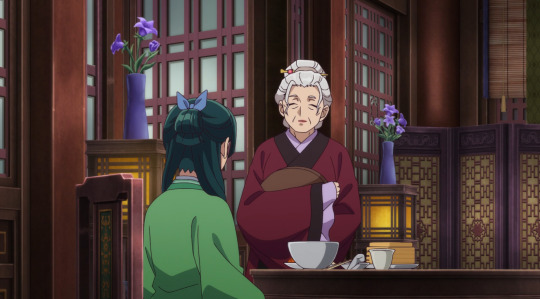
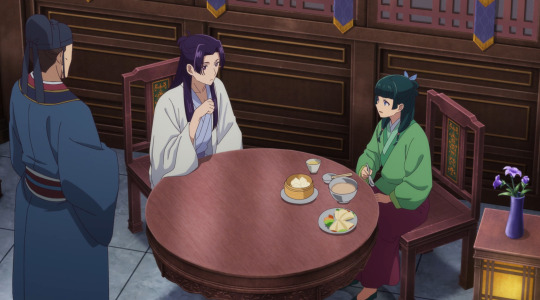
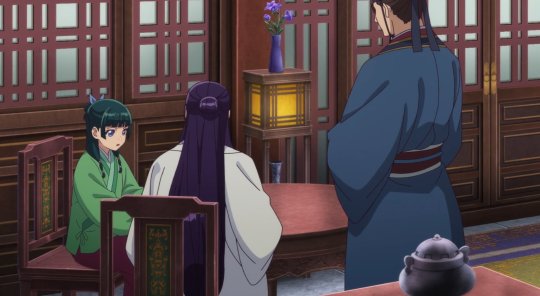

#THE EMPHASIS ON THE Bellflowers IN JINSHI'S ROOM WITH MAOMAO.#symbolizes “Unchanging Love”Its a flower la give my own special someone. That she'd pledge her eternal love to you.#bellflower#kusuriya anime#maomao and jinshi#jinshi#love#jinmao#anime#aesthetics#theapothecarydiaries#maomao#kusuriyanohitorigoto#kusuriya no hitorigoto#jinshi x maomao#maomao jinshi
55 notes
·
View notes
Text
so many people have brilliant things to say about little details in shows, the meaning behind an artistic decision, the symbolism of flowers, hard-to-translate language concepts, things that really add to your understanding of a work
I can't do any of that
all I can offer you is that this skeleton doesn't have enough ribs

but they did get the handedness of their DNA correct (sooo much art has it twisting the wrong direction)
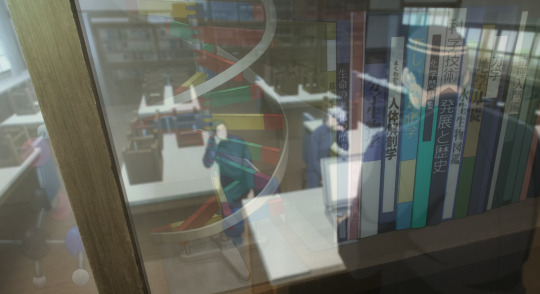
this means nothing, enjoy ❤️
#jujutsu kaisen#jjk#jujutsu kaisen spoilers#jjk spoilers#jjk anime spoilers#jjk s2#gojo satoru#geto suguru#they are just such little guys in this ep <3#science fun#biology#skeleton#btw look up the meaning of orange osmanthus if you want to ruin your life#it's the flower that's between geto and gojo's hands in the ED and is also shown as a standalone between shots in the ED#I was not the one who noticed that though and I don't do Flower Symbolism so I can't take credit for it#image description in alt text
277 notes
·
View notes
Text

❄️ ORPHAN ❄️
I’ve always wanted to paint a seal after living in Finland !
Finland’s biggest lake is home to one of the rarest seals in the world called Saimaannorppa. They have lived in complete isolation from other seal groups ever since the land rose during ice age and they became trapped into lake Saimaa. This caused them to evolve into a different subspecies, endemic to this lake!
The Saimaa ringed seal is also one of the most endangered seals in the world; around 400-500 seals remain in the lake today.
🌜 Closeups under the cut, along with a little talk about the symbols I used this painting! 🌛
I wanted the frame to contain plants and animals from the saimaa seal’s natural habitat as well as some symbolic elements.
🌿 I made sure to choose freshwater plants and fish because they live in a lake!
As for the symbols, you will recognise two animals from often overlooked constellations of the northern sky:
🐱 the lynx who appears in some northern mythologies & is said to be a bearer of clairvoyance due to its powerful eyesight.
🦊 the mythical creature tulikettu, a fox whose tail twinkles fire. When running through the night it leaves behind a trail of light, creating the northern lights (in finnish, revontulet, the fox fires)
Lastly because I’m always a fan of flower language, I added two beautiful flowers:
🤍 the Anemone which is said to have signified abandonment in medieval illuminations, or maybe “don’t abandon me”?
💙 the Myosotis, also known as “forget-me-not” in many languages due to the tale of a knight throwing this flower to his lady before falling into a lake. This flower also became a symbol for International Missing Children’s Day (may 25)



#endangered species#saimaa ringed real#illustration#my art#finland#saimaannorppa#northern lights#glacial relict#endemic species#lake saimaa#seals#biodiversity#color palette#watercolor illustration#watercolor painting#watercolor#flower symbolism#cultural symbolism#animal symbolism#symbolic#mythology and folklore#finnish mythology#flower language#mythical creatures#image description in alt
12 notes
·
View notes
Note
🌼 + whichever character you'd like

Marigold (Tagetes)
Meaning: pain, grief, despair, mourning, healing, affection
#ohhhhhhjjhjhd hehehehehehehehe#GOD i love flower symbolism#animation vs minecraft#animator vs animation#avm#ava#alan becker#avm mango tango#avm mango#avm king orange#pastart
344 notes
·
View notes